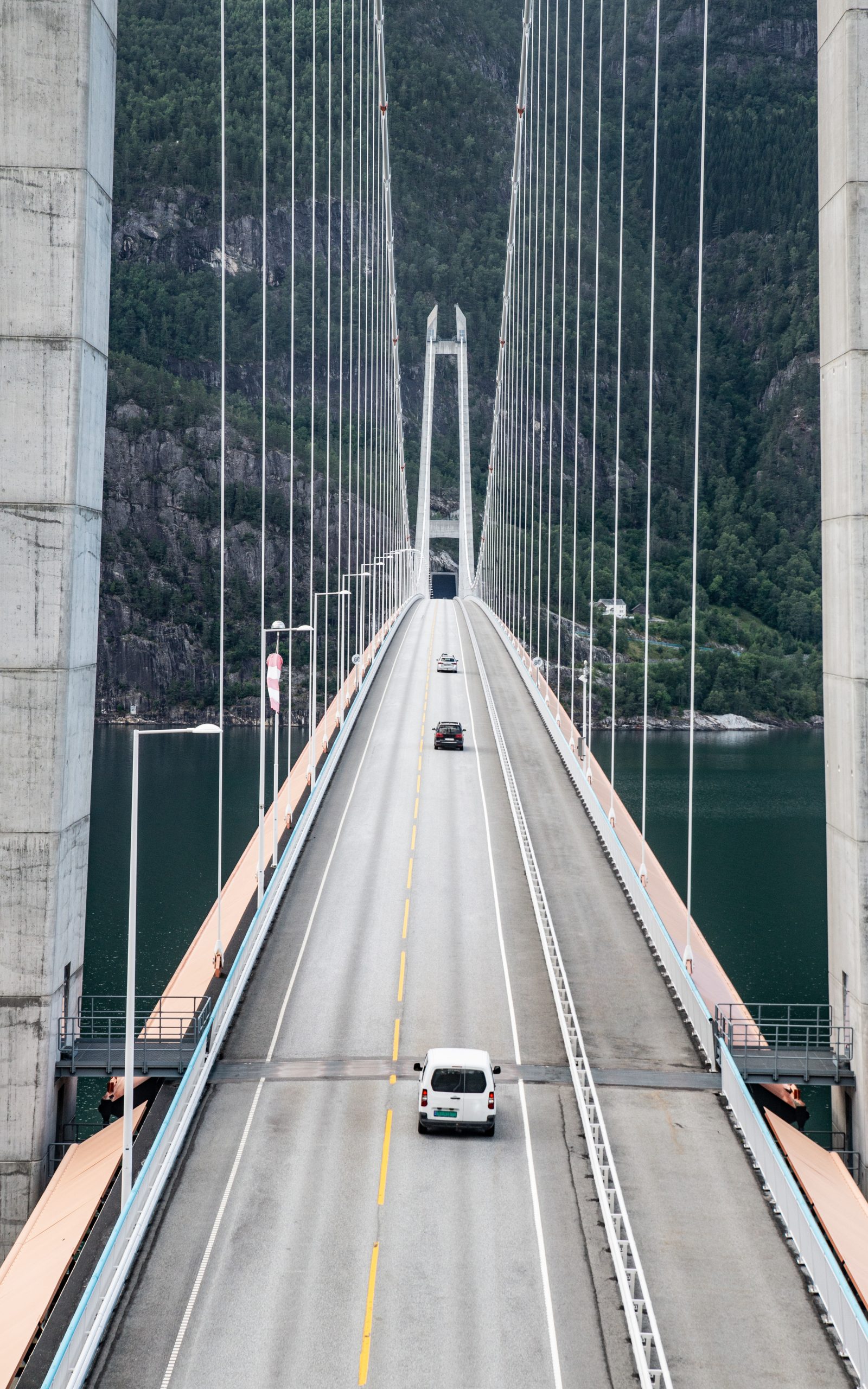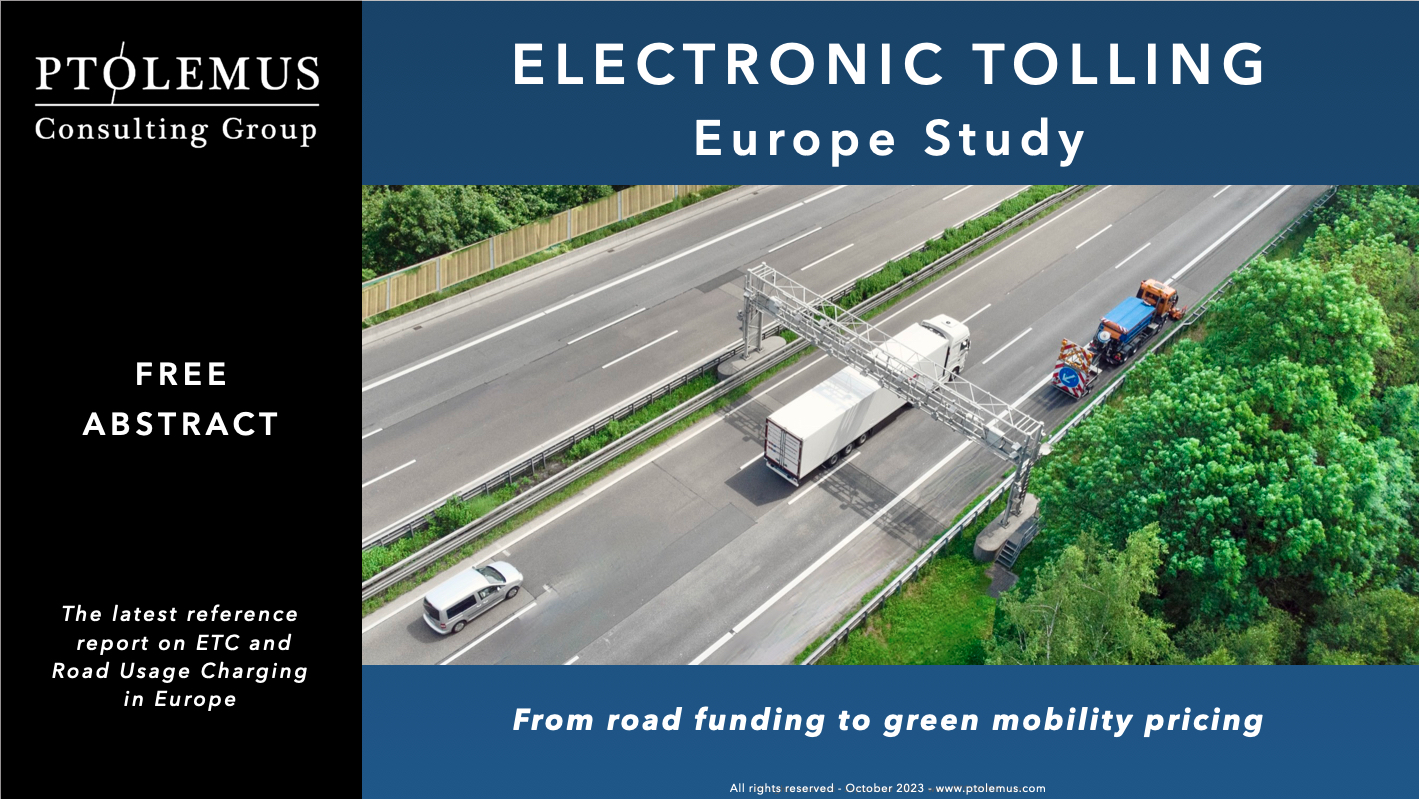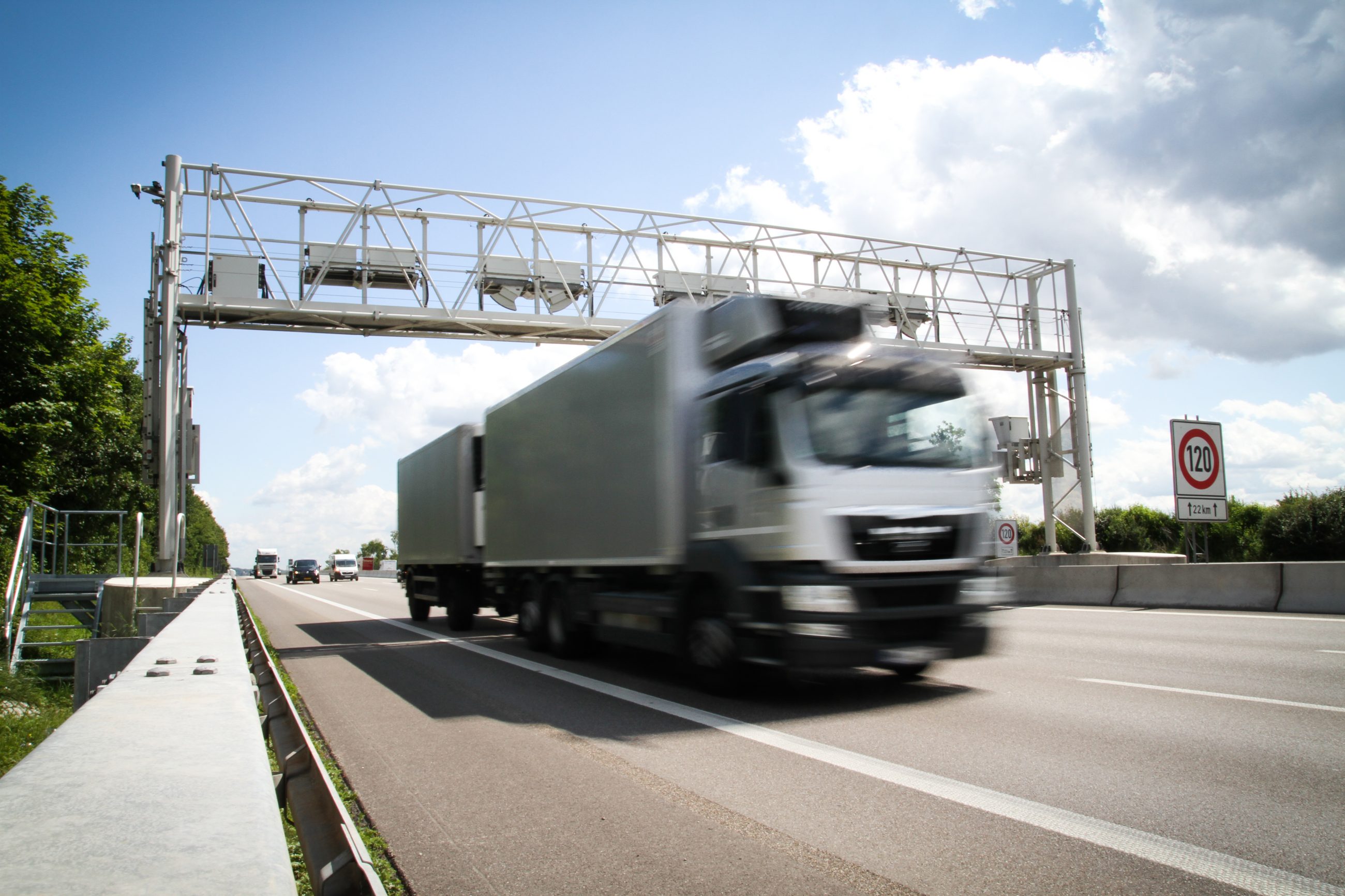Highlights from the latest RUC Conference in Brussels

Road Usage Charging is becoming mainstream in Europe
Frederic Bruneteau, PTOLEMUS’ Managing Director, was attending what has become a family reunion, with the same faces and several speakers coming back every year.
However there was still much to learn.
Bart Dewandeleer, Vice President of Viapass was celebrating the 10 years of the existence of the Belgian Road Usage Charging scheme, including 7 years of operation.
The scheme is a clear success with zero outage day since April 2016. It collected €888 million for the 3 Belgian regions, a 7% increase over 2022.
The star of the first day was Jan Strijk, Director, Tolling, RDW, who was presenting what is still a very current tender process for many participants.
He confirmed the Netherlands’ tolling roadmap:
- 2024: Start of e-tolling in Rotterdam’s Blankenburg tunnel, using ANPR
- 2026: Launch of the HGV charging scheme, using GNSS covering 3000 km and expected to generate €850 million p.a. i.e. roughly the same as in Belgium.
The results of the 2 tenders, after the competitive dialogue process, should be announced in Q2 2024 (RSE) and Q3 2024 (NSP). However, both schemes will still need Parliament approval to start, which may create challenges given the country’s political situation.
Tariffs will be based on CO2 emissions from the start. Providers are already welcome and an interface is ready for them to test (before the accreditation).
Stefan Koesling, Head of Strategy & Business, was representing Toll Collect. The state-owned company has collected €95 billion since 2005 and will reach a massive €100 billion by end 2024.
Two projects are coming out of its innovation lab:
- Parking space information will be provided as open data and integrated into Germany’s mobilithek open data portal.
- A very interesting project has been launched to assist the country in monitoring the state of Germany’s over 40,000 bridges. Most of them were built in the 60s and 70s and now require urgent repair. The idea being tested is to use weight sensors at 2 points of a bridge and to compare the data with real-time positioning data of the truck system, allowing instant detection of overweight vehicles. The company believes that it will need only 3-400 sensors to obtain a very reliable weight enforcement system; the same way it today operates only 300 toll gantries.
Bernd Datler of ASFINAG was presenting how his company anticipated the Austrian decision to implement CO2-based charging so as to be ready to implement it from the beginning of 2024! ASFINAG will gradually increase the CO2 surcharge from 30% of the maximum value to 70% in 2026. Bernd Datler highlighted the fact that to implement the new system, toll chargers now require data from automotive OEMs, i.e engine characteristics (for ZEVs) and CO2 emission class of vehicles.
This example is the best evidence that countries with concessions can definitely implement the Eurovignette’s directive on CO2 charging. More details on the subject can be found in PTOLEMUS’ latest Electronic Tolling Europe Study.
The RUC conference took place at the same time as an AETIS Board meeting, so very few toll service providers were present, except Toll4Europe, which was doing its coming-out!
Peter Tschulik, recently arrived from Norbit, presented the Toll Service Provider created by T-Systems, Daimler Truck, DKV Mobility and Shell and explained the challenges of making CO2 charging work under very short deadlines! Given the required software change in its OBUs, Toll4Europe had to recertify its devices across all its European footprint of toll domains! Peter Tschulik strongly recommended other countries that implement CO2 charging to leverage the learnings from the German and Austrian implementations, so as to make it easy for EETS providers to connect.
Ragnar Bjartmarz, Head of RUC Strategy Centre, Ministry of Finance & Economic Affairs of Iceland was presenting how the island-country decided to implement an odometer-based model for RUC across all vehicle categories. The driving factors are the growing fuel efficiency of new vehicles and the rapid move towards EVs. As a result, petrol and diesel duties decreased from 1.2% of GDP in 2006 to 0.7% in 2022 and this despite a growing road traffic! This is actually the first nationwide RUC system implemented for all vehicles in the world. Iceland sees this new non-automated system as the first step towards a fully automated RUC scheme.
Georgi Temelkov, Director, Bulgarian National Toll Administration, presented how the revenues from the new GNSS-based HGV charge have rapidly outgrown revenues from the e-vignette for light vehicles. The RUC system is expected to generate 2/3 of total toll revenues this year. In 2024, the system will bring revenues of €940 million, comparable to those raised in another crossroad country, Belgium. As a result, the country has moved from a state of chronic underfunding to a balanced development of its road infrastructure.
Egil Andreas Aesheim, Senior Advisor at the Norwegian Public Roads Administration presented the success of DSRC-based Multi-Lane Free Flow (MLFF) in Norway. The last manual toll station disappeared in 2020. Thanks to the new system, tolls do not create traffic congestion any more, less space is needed and the risks of crashes has been significantly reduced. Thanks to the separation between toll chargers and toll service providers, the system is now fully EETS-compatible and EETS providers can operate seamlessly in the AutoPASS domain.
In a panel with Giacomo Migliore (European Commission – DG MOVE) and Jonny Geidne (Swedish Transport Agency), Egil Andreas Aesheim was also underlining that Norway is under high pressure to reform its fuel tax system due to the very fast growth of EVs, as documented in our recent Norway Vehicle Electrification Study.
As a result he recommended to start RUC for all vehicles in Norway using a 3-step approach: 1. An odometer-based solution; 2. A specific charge for EVs 3. A GNSS-based solution.
Based on our analysis of State RUC pilots in the US, which can be read in our recent RUC USA Report, and our work for a European Ministry of Transport, we view however an odometer-based solution as very fragile and probably not possible in a country with international traffic (contrarily to Iceland). This is because the odometer-solution does not include clear and robust mechanisms to exclude kilometers made outside of the country. Further, in a 2017 European Parliament-commissioned study, it appeared that in countries that have not implemented a specific system (such as Belgium), odometer tampering is very frequent. In supposedly very disciplined Germany, one third of odometers had been manipulated in 2011. In a study of data exchange between Belgium and the Netherlands in 2017, it was found that approximately 10% of vehicles had their odometer manipulated.
Egil Andreas Aesheim mentioned that he was aware of these issues but that a risk/reward ratio analysis still made it worthwhile to implement an odometer solution to raise immediate funding.
Camilla Riff Brems, Head of Division at the Danish Ministry of Transport, presented the implementation of the Danish truck satellite-based charging system. Her motto: “Start small, learn and expand!” Interestingly the nationwide RUC system will only require 6 fixed enforcement points and 6 mobile enforcement vehicles equipped with tripods. She also mentioned that Denmark is currently trialling a smartphone app-based distance-based tolling system for passenger cars and Light Commercial Vehicles (LCVs).
Finally, Andrew Whittles, Director of Air Quality Programmes at Bradford Council, presented how Bradford managed to make a chargeable Low Emission Zone (LEZ) a popular proposition! The 7th city in the UK succeeded by focusing its communication on improving air quality and health. 70% of the population support it! The scheme, called Bradford Clean Air Zone (CAZ), has become the 2nd largest road user charging scheme in the UK, covering 24 km2. It has now the lowest levels of NO2 recorded since the CAZ was implemented, moving from 40-55 micrograms / m3 to around 20-35 today. As a result of hospital admissions for asthma has decreased by 25% in Bradford.
Overall, when compared with previous issues of the event, we observed a number of key changes:
- Ministries of Transport have gained a greater level of confidence in the feasibility of new RUC schemes, reinforced by the resounding success of multiple European schemes, from Germany to Bulgaria
- A new wave of CO2 surcharges is about to roll across Europe, bringing new revenues for heavily indebted governments
- Asset monitoring is about to become increasingly important as the infrastructure is passing its expiry date in many countries
- RUC for light vehicles seems to be around the corner
- The integration of data from multiple sources and categories seems to solve new problems
- Enforcement is proving a critical element of the credibility of the new schemes
To discuss these topics with PTOLEMUS, please contact Frederic Bruneteau.

